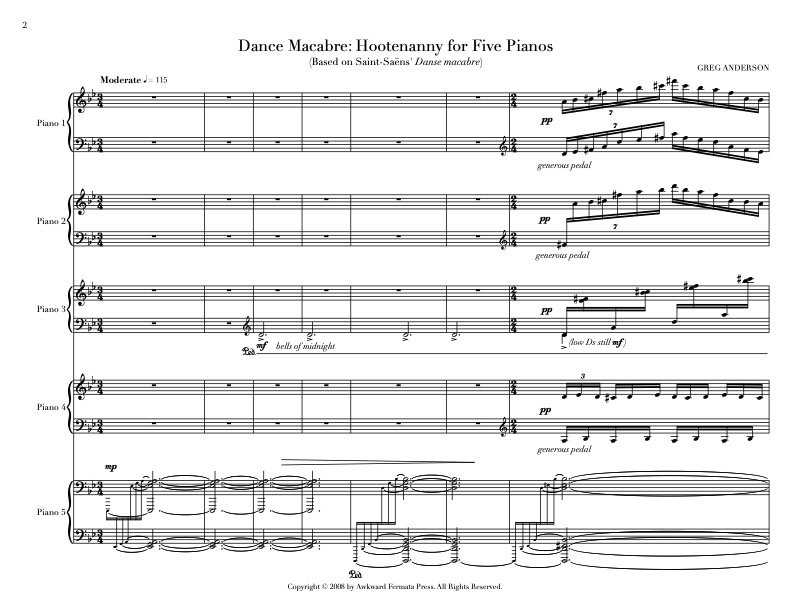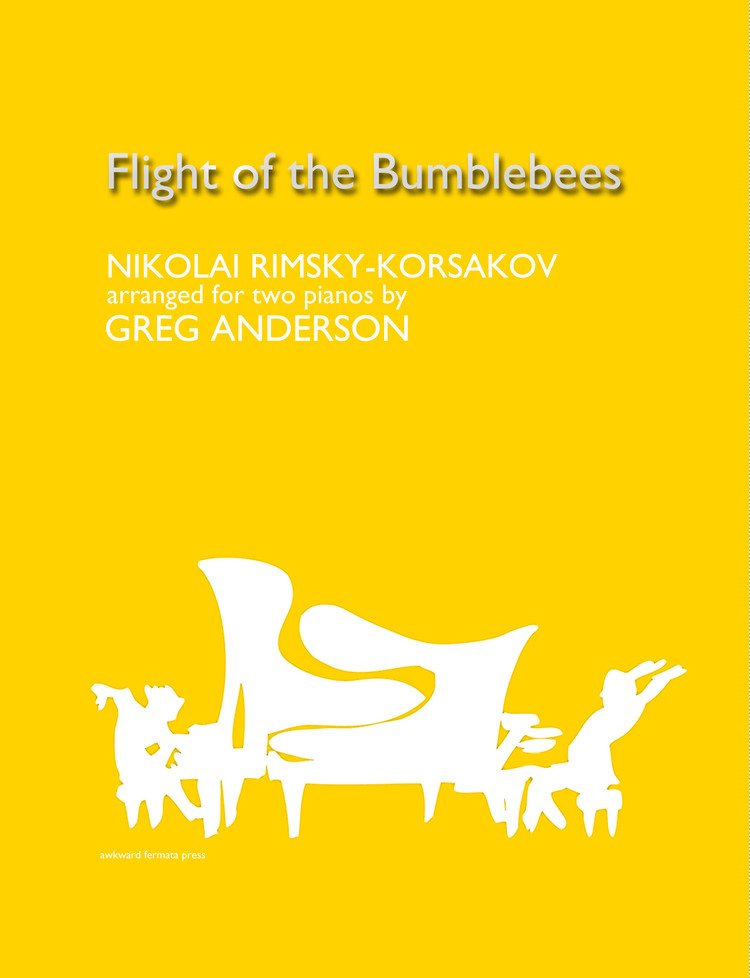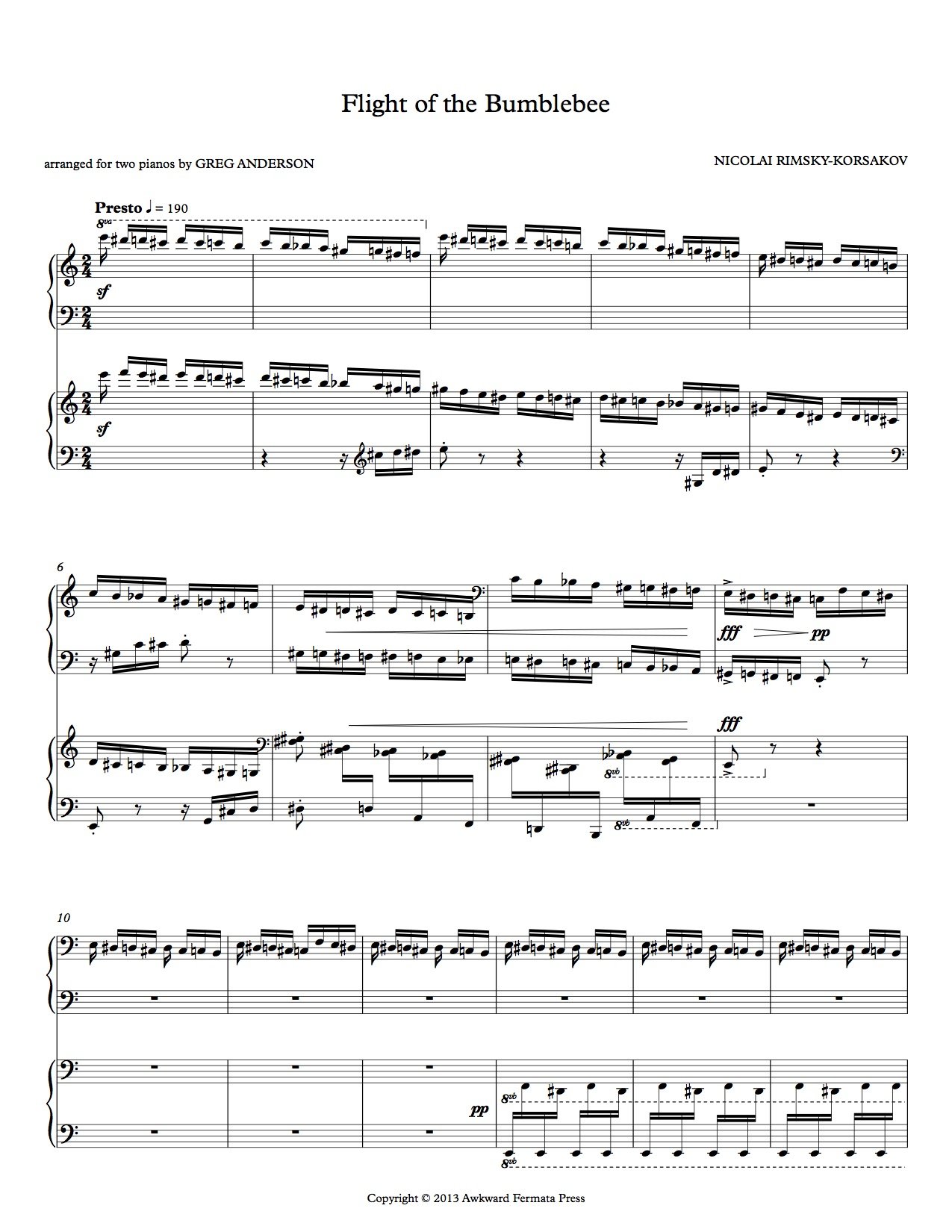 Image 1 of 4
Image 1 of 4

 Image 2 of 4
Image 2 of 4

 Image 3 of 4
Image 3 of 4

 Image 4 of 4
Image 4 of 4





Danse Macabre: Bacchanal for Five Pianos
by Greg Anderson, based on Camille Saint-Saëns’ Danse macabre, Op. 40
advanced
by Greg Anderson, based on Camille Saint-Saëns’ Danse macabre, Op. 40
advanced
by Greg Anderson, based on Camille Saint-Saëns’ Danse macabre, Op. 40
advanced
Details
Danse Macabre: Bacchanal for Five Pianos by Greg Anderson, based on Camille Saint-Saëns’ based on Saint-Saëns’ Danse macabre, Op. 40 / Full score (no individual parts) / Difficulty: Advanced / Duration: 11 minutes / Pages: 82 / Copyright: 2008 / Work number: 031.1 / Spotify / Apple Music
Variants available for two pianos, percussion, and violin and two pianos.
Program Notes
In medieval times, “Danse Macabre” was an allegory emphasizing the universality of death. No matter one’s station in life—emperor, beggar, monk, mother, or musicians—the dance of death unites us all.
In 1874, Camille Saint-Saëns composed his Danse macabre, the third of his four symphonic poems, drawing upon a tradition that once captivated medieval painters and artists. Although it is his most frequently performed orchestral work, its origins lie in an art song for voice and piano set to a poem by Henri Cazalis, an excerpt of which is translated into English below:
Zig, zig, zig, Death in a cadence,
Striking with his heel a tomb,
Death at midnight plays a dance-tune,
Zig, zig, zig, on his violin.The winter wind blows and the night is dark;
Moans are heard in the linden trees.
Through the gloom, white skeletons pass,
Running and leaping in their shrouds.Zig, zig, zig, each one is frisking,
The bones of the dancers are heard to crack—
But hist! of a sudden they quit the round,
They push forward, they fly; the cock has crowed.
Saint-Saëns paints this nocturnal vision with eerie charm and precision. The clock strikes midnight. Death tunes his violin. And the skeletal revelers emerge, joining in a raucous waltz whose sinuous theme is a sly nod to the Dies Irae, the ancient chant for the dead, spinning and cavorting until dawn drives them back to their graves.
The musical material of Danse macabre lends itself uncannily well to multiple pianos. In seven distinct reimaginings—ranging from literal transcriptions to audacious mashups, including one for five pianos and full orchestra—I explore the piano’s capacity for both spectral textures and rhythmic violence. Swirling figurations evoke the fog and frenzy, while crisp attacks mimic the clatter of bones.
In this version for five pianos, the five pianists are positioned in a circle, just as the figures in Danse Macabre artworks were often depicted in the round, symbolizing the cyclical nature of life and death. The work culminates in an extended, unbridled hootenanny with the pianists taking turns in the spotlight to flaunt their virtuosity.
— Greg Anderson
Hootenanny:
1. a social gathering or informal concert featuring folk singing and, sometimes, dancing.
2. an informal session at which folk singers and instrumentalists perform for their own enjoyment.— Random House Dictionary
Additional variants
by Greg Anderson, based on Camille Saint-Saëns’ Danse Macabre
advanced
by Camille Saint-Saëns & Greg Anderson
based on themes from Carnival of the Animals and Danse Macabre, Op. 40
for 2 pianos
advanced












